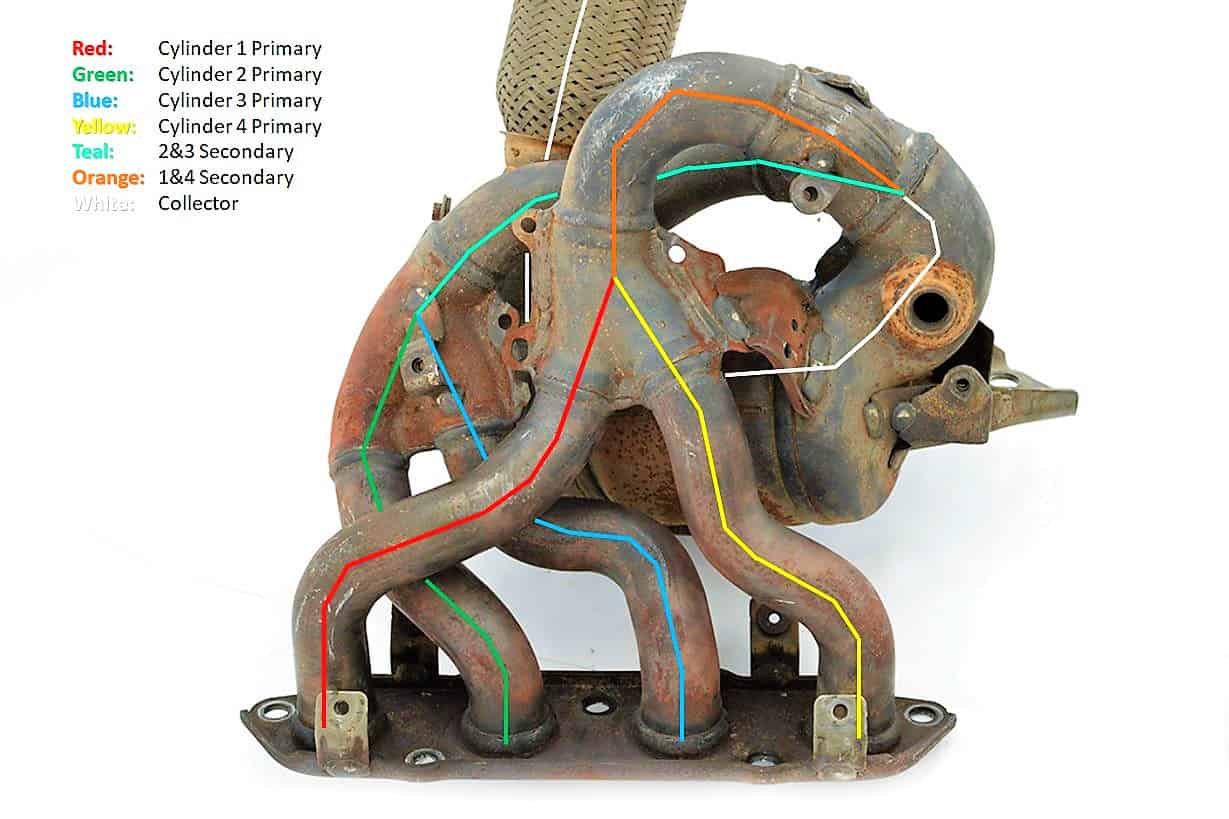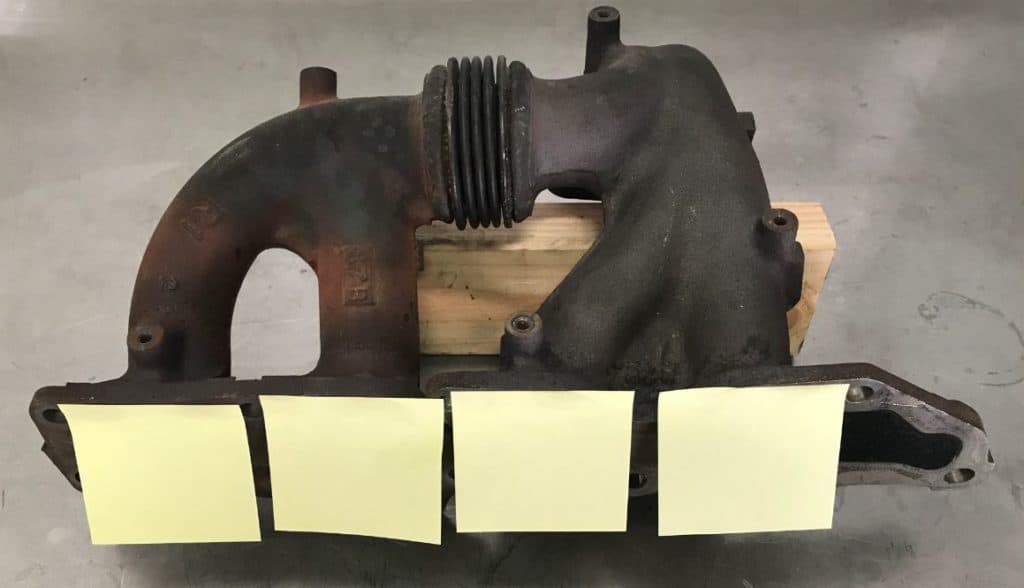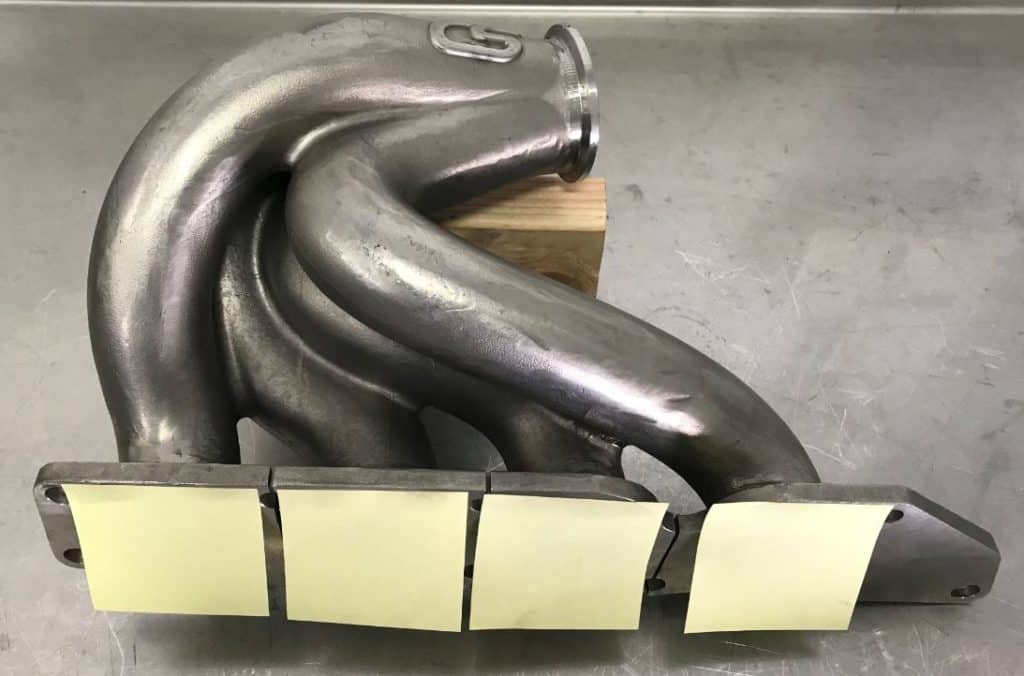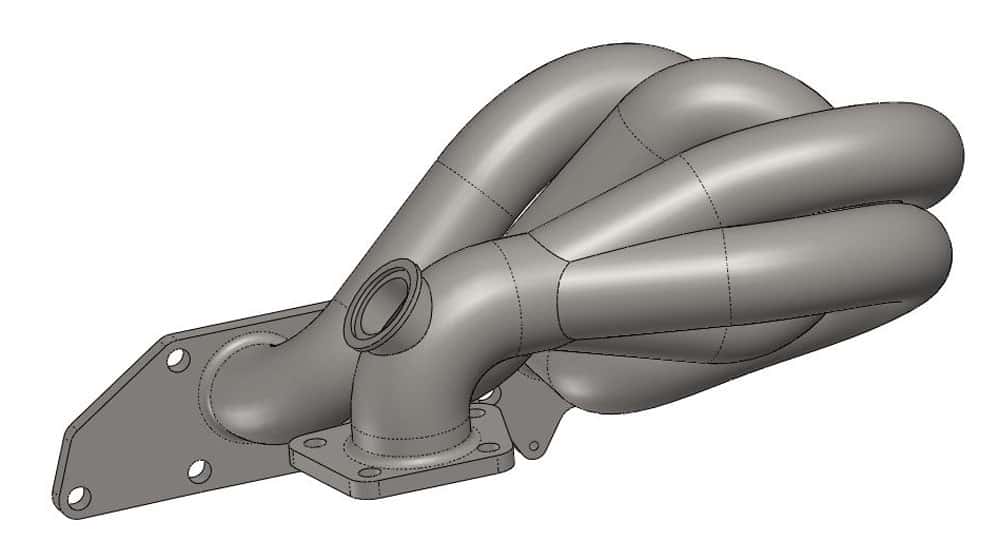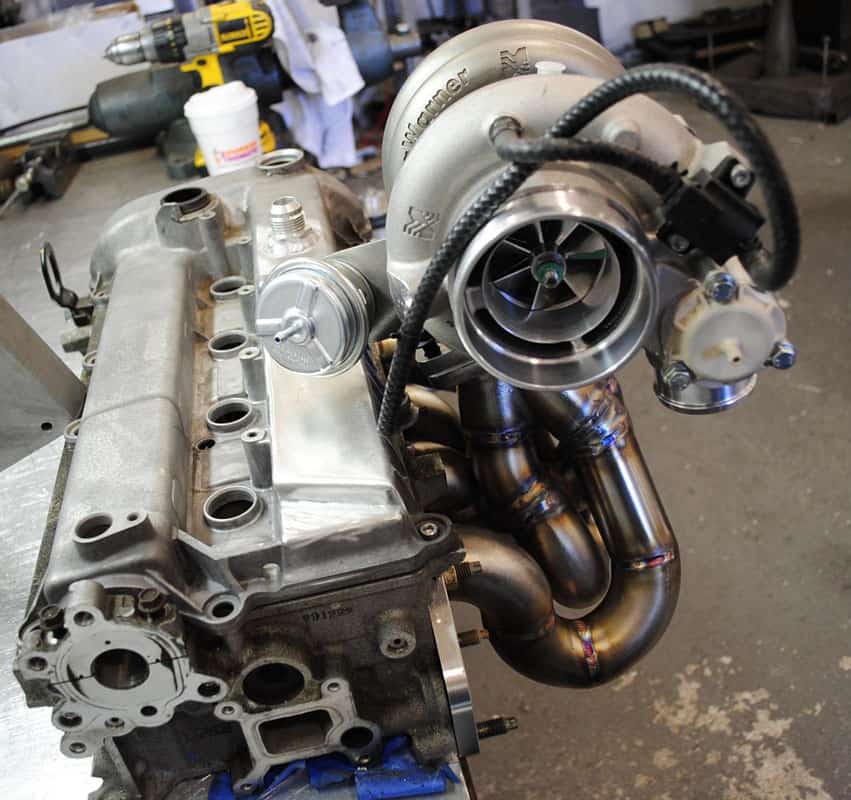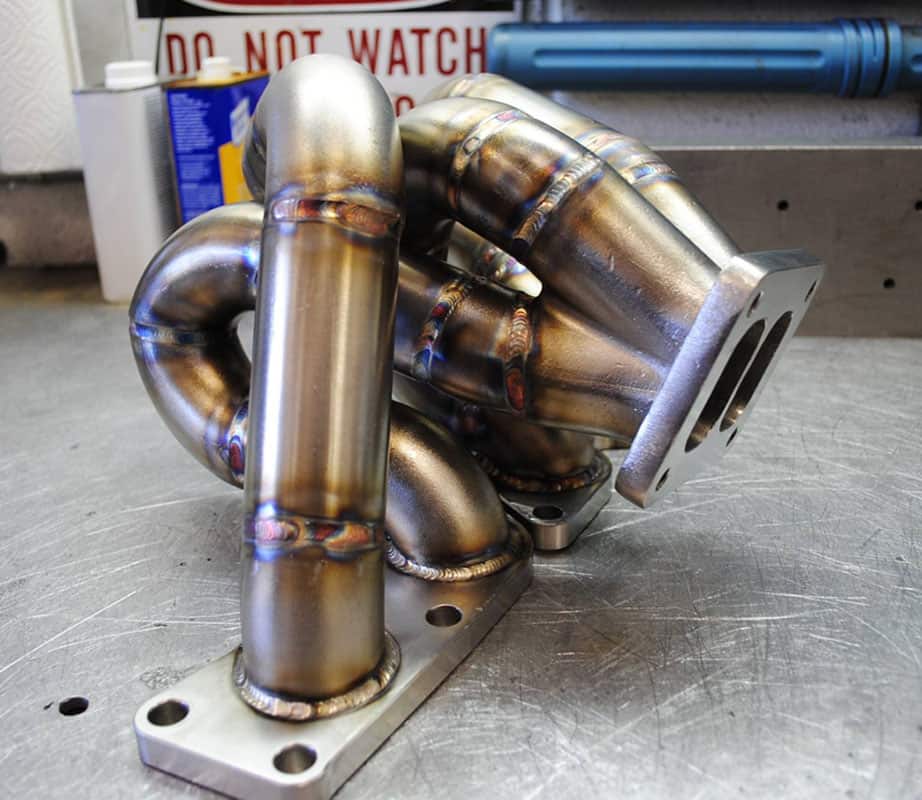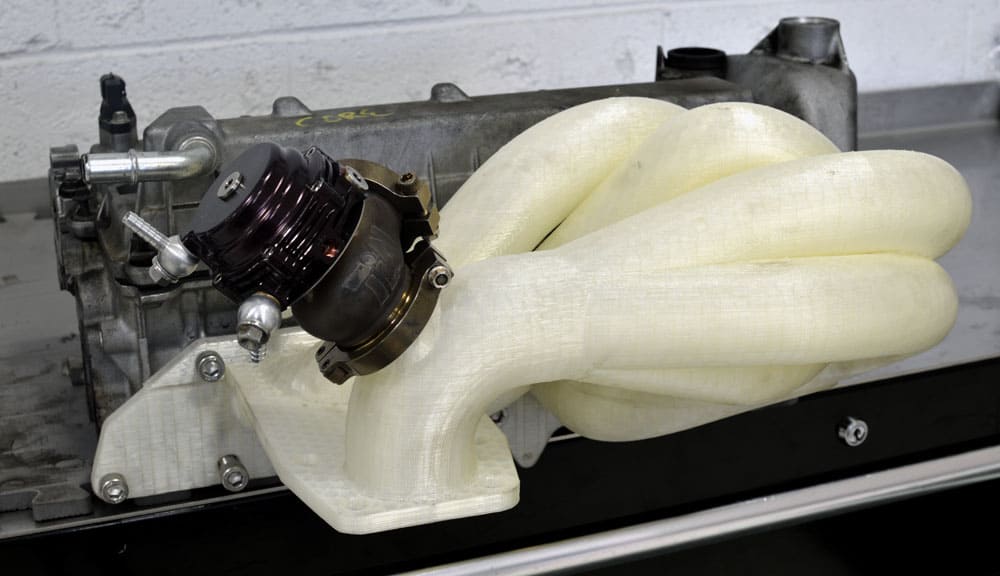Analyzing an OEM part is usually our first step in creating a new performance part. We’ve been looking at the Mazda 2.5l SkyActiv-G Exhaust Header, and I wanted to bring you all along for the ride. It’s surprisingly complex for an OEM manifold/header and some serious engineering went into it.
If you’ve been paying attention to the CorkSport channels, you may have seen rumors here and there of a race header for the GEN3 Mazda 3 and Mazda 6 2.5L. While I can’t say too much on that just yet, but I can give you a breakdown of the OEM exhaust header that’s hiding in the back of your engine bay.
The OEM Exhaust Header
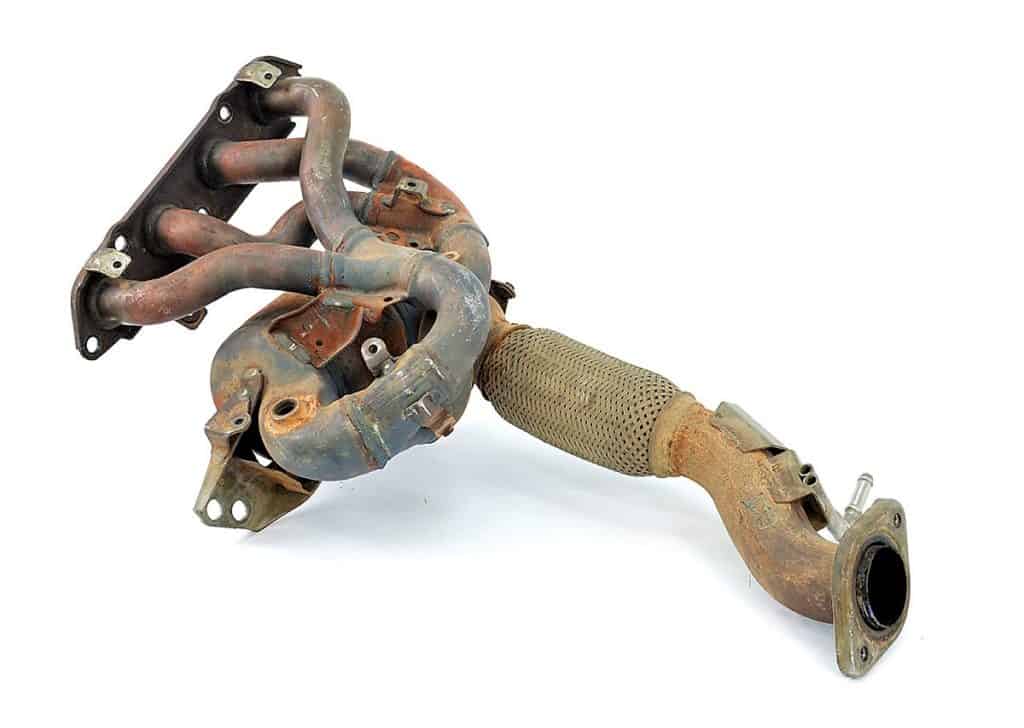
Excuse the dirty part, as this OEM header has had a hard life! I imagine many of you have not seen the stock header as it’s in the back of your engine bay surrounded by heat shields. Taking the heat shields off gives us a glimpse of the craziness that is the stock header. Mazda has gone with a true 4-2-1 design (also known as tri-y) with an integrated catalytic converter and what appears to be equal length runners. Stay with me, I’ll explain what all that means.

The image above hopefully helps you visualize the 4-2-1 design. Starting at the engine, there are four exhaust ports from the head. Each exhaust port gets its own pipe, known as a “primary”. The primaries then pair together to form two “secondaries”. Finally, the two secondaries combine into one collector pipe, in this case heading directly into the catalytic converter. The three unions or “y’s” are where the tri-y name comes from. The 4-2-1 design was chosen by Mazda for a very specific reason. Check out the image below and Mazda’s explanation HERE.

Essentially, using a very high compression ratio causes very high exhaust gas temperatures. If too much of this exhaust gas is leftover in the cylinders for the next combustion cycle, knocking can occur. In addition, if you have a short 4-1 header or a log-style manifold you can suck exhaust gas into a cylinder before combustion as one cylinder can be on an intake stroke while another is on an exhaust stroke (see the upper image in Mazda’s diagram).
OEM Design Efficiency
The 4-2-1 has two benefits to fight this. First, the long length means the exhaust gas takes longer to traverse the pipes, so one cylinder sucking in another’s exhaust is drastically reduced. Second, the cylinders are paired correctly to one another (1 with 4 and 2 with 3). Since the firing order is 1-3-4-2, each secondary is receiving an exhaust pulse at a regular interval. If you paired 1 with 3 for example, you would receive two pulses quickly, and then a large gap as the other two cylinders fired. This helps with exhaust scavenging as the pulse from one cylinder helps “pull” the leftover exhaust from the cylinder it’s paired with. These benefits can also be present on a long tube 4-1 if designed well but, there is a good reason why Mazda did not choose this option.
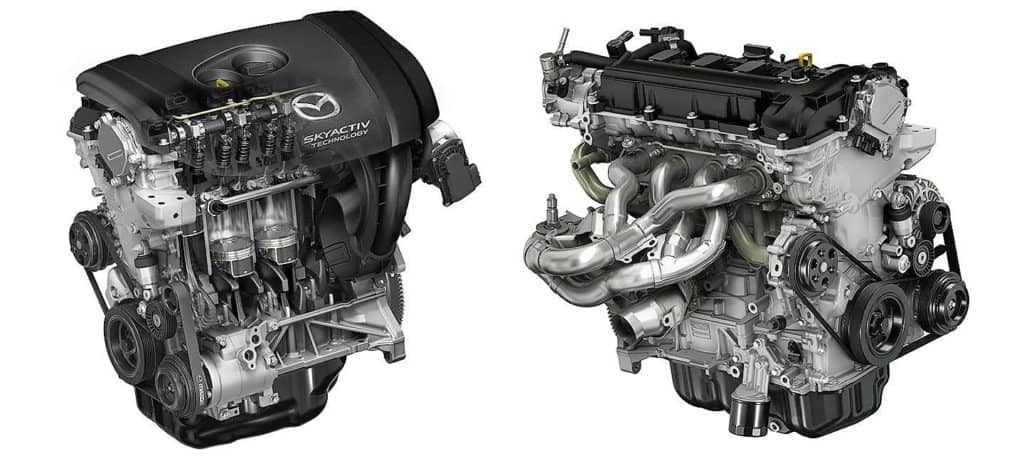
Typically a well-designed 4-2-1 will make more power and torque in the midrange while a well-designed 4-1 will make more power way up at the top of the RPM range. Since normal driving does not involve being at the top of the RPM range all the time, it makes sense that Mazda went with the 4-2-1. We will likely do the same as we want to retain the low knock characteristics of the 4-2-1, high midrange power & torque, and because the SkyActive 2.5L is a fairly low revving engine.
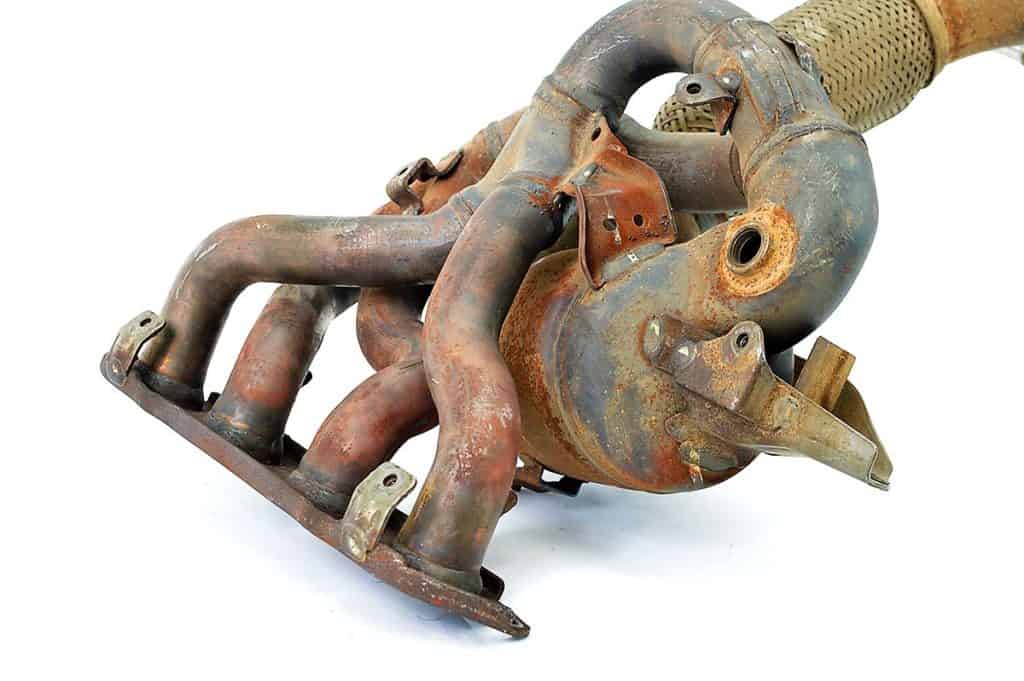
It appears that Mazda also went with close to equal length runners. This means that each primary section is the same length and each secondary section is the same length. Having equal length runners ensures the exhaust pulses are arriving at the collector (or Y) at uniform intervals.
The easiest way to explain why this is a good thing is by visualizing the entrance ramp to a highway. When cars entering the highway follow the “zipper” method for merging, the cars currently on the highway do not need to slow down. The highway and entrance ramp merge and flow in a smooth and consistent rate. However, if a surge of cars come down the entrance ramp to merge onto the highway you will get a back-up of cars on the entrance ramp and will disrupt the flow of cars on the highway. If the cars are exhaust gases and the highway is the exhaust pipe, you can understand why equal length can help. Again, we will adopt this strategy with the CorkSport Race Header.
So far so good then, as Mazda has put a lot of thought into making a high-quality stock header. However, as usual, there are a few areas we can improve on. That’s coming in a later blog though so you’ll have to stay tuned for more details! Let us know if you have any questions or thoughts down below.
-Daniel @ CorkSport


